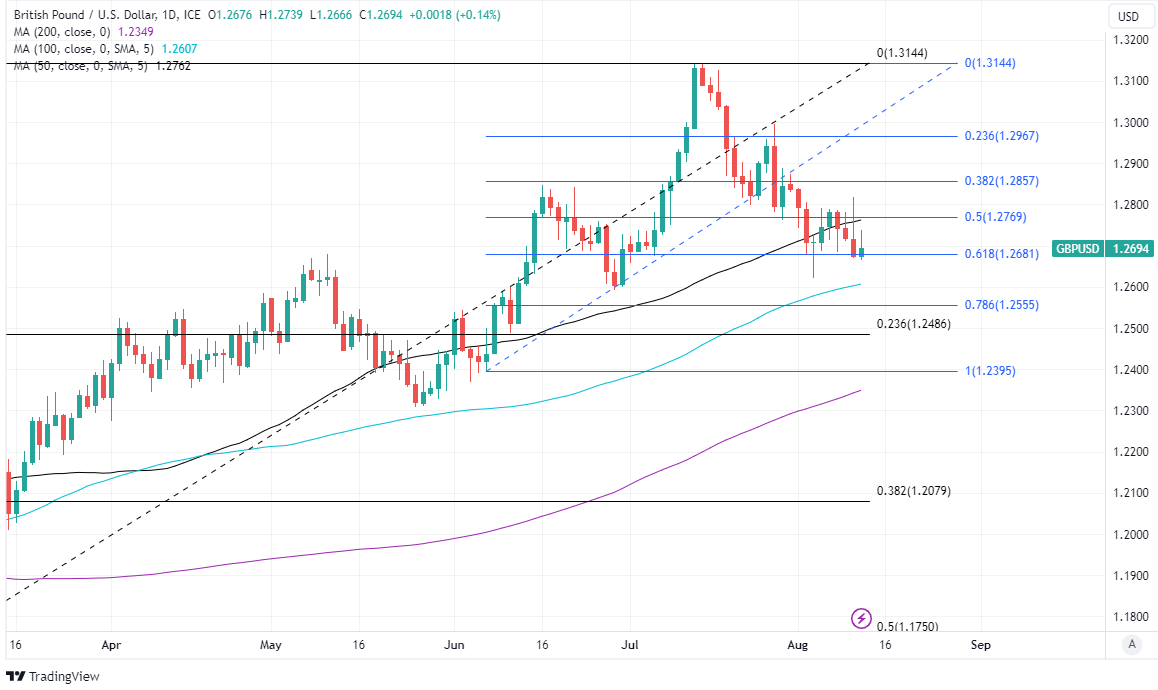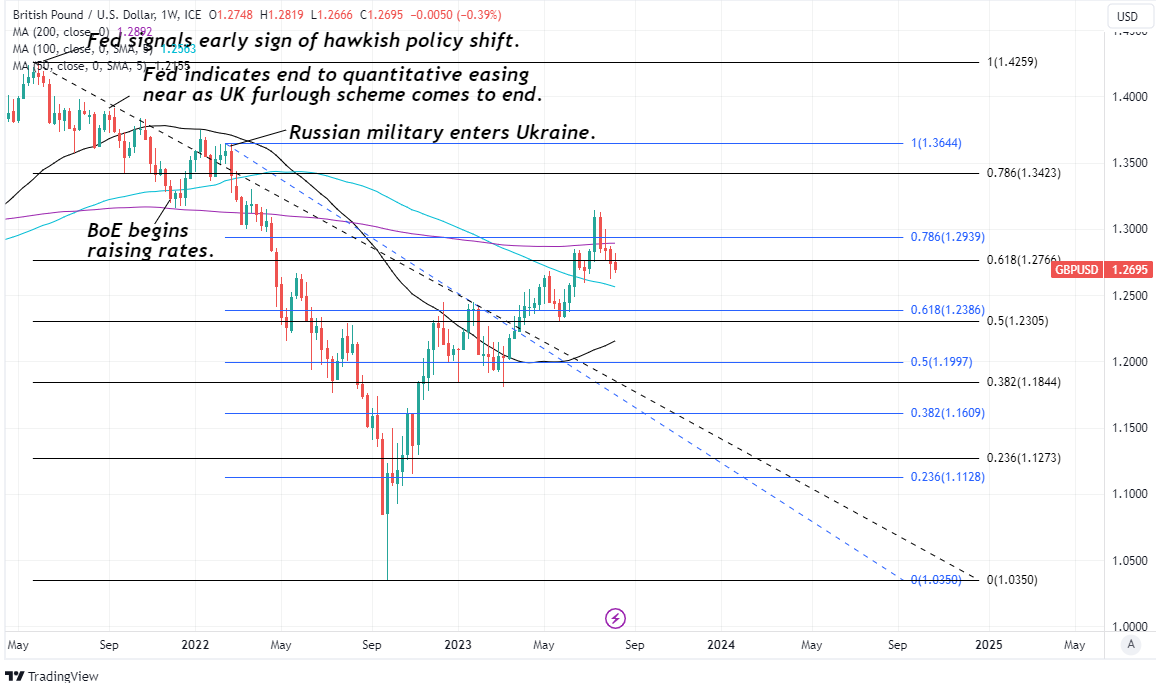GBP/USD Rate Struggles for a Foothold after U.S. Data Stifles Rally
"Next week's data releases carry a very high weight for markets and the BoE" - BMO Capital Markets.

Image © Adobe Stock
The Pound to Dollar exchange rate unwound much of an earlier rally heading into the weekend as financial markets appeared to contemplate what surprisingly strong producer price inflation in July could mean for the measure of inflation most closely watched by the Federal Reserve (Fed).
Dollar rates climbed throughout much of Friday's trading session but rose further into the European close after the Bureau of Labor Statistics said both monthly measures of companies' production costs climbed 0.3% last month when the economist consensus had envisaged only 0.2% increases in each barometer.
"This hints that the battle against inflation may not be over just yet in the US. This result could lead to strength in the USD today, and higher US yields," says Ryan Brandham, head of global capital markets at Validus Risk Management.
Producer Price Index figures measure changes in the cost of wholesale goods and appeared to suggest on Friday that price pressures ticked higher again in July, leading some economists to wonder aloud whether there would be a similar development in the next edition of the core Personal Consumption Expenditures Price Index.
The latter is the preferred and targeted inflation measure of the Fed and had fallen to a 0.2% monthly pace in June, from 0.3% previously, leaving it running at an annual rate of 4.1% and within arm's reach of the two percent average inflation target in the U.S.
Above: Pound to Dollar rate shown at daily intervals with Fibonacci retracements of second-quarter rally and selected moving averages denoting possible areas of technical support.
"Based on details in the PPI and CPI reports, we estimate that the core PCE price index rose 0.22% in July, corresponding to a year-over-year rate of +4.25%. Additionally, we expect that the headline PCE price index increased 0.22% in July, or increased 3.29% from a year earlier," says David Mericle, chief U.S. economist at Goldman Sachs.
Dollar buying persisted following a later reported fall in consumer confidence measured by the University of Michigan and was undeterred by accompanying details suggesting a modest decline in short and long-term inflation expectations during August.
"The Michigan survey puts a large weight on perceptions of personal finances, which are likely to take a hit when repayments on student loan debts restart in October," says Ian Shepherdson, chief U.S. economist at Pantheon Macroeconomics.
Live GBP/EUR Money Transfer Exchange Rate Checker | ||
Live Market Rate: | get quick quote | |
Corpay: | ||
Banks: Median Low | ||
Banks: Median High | ||
These data are based on the spread surveyed in a recent survey conducted for Pound Sterling Live by The Money Cloud. | ||
"The Fed has made it clear that it wants to see a sustained drop in longer-term inflation expectations, so the stickiness of the Michigan number is a little worrying. But our second chart shows that even longer-term inflation expectations are sensitive to the current rate of headline inflation, which is falling sharply," he adds.
Friday's data followed hard on the heels of July's consumer price index inflation reading released on Thursday and suggested a more modest rebound in both the overall and annual measures of price growth last month with the former inching higher from 3% to 3.2% while the latter surprised on the low side of expectations.
Core inflation fell back from 4.8% to 4.7% in July when it had been widely projected to remain unchanged, and is more closely monitored by central bankers for its overlooking changes in volatile energy and food prices, which leads policymakers to view it as a better reflection of inflation generated in the domestic economy.
Above: Pound to Dollar rate shown at weekly intervals with Fibonacci retracements of selected downtrends indicating possible areas of technical resistance.
"We believe it right that the market remains doubtful that the Fed will carry through with the final interest rate hike they predicted in their June forecast update," writes James Knightley, chief international economist at ING, in a Friday economics commentary.
"With the headwind from higher borrowing costs and tighter lending conditions set to intensify economic headwinds and the restart of student loan repayments in October set to squeeze the finances of millions of households, we expect the Fed will leave rates on hold through early 2024 with a strong chance of a rate cut as early as March," he adds.
For Sterling, Friday's data further stifled an earlier rally in the Pound to Dollar rate whipped up by UK economic growth numbers that were stronger than many in the market anticipated, leaving it struggling for a foothold near a major level of technical support on the charts ahead of the weekend.
"Next week's data releases carry a very high weight for markets and the BoE," says Stephen Gallo, a global FX strategist at BMO Capital Markets.
"Net total non-commercial positions in GBP appear quite stretched on the basis of recent data (net long by 50K futures contracts). The even more problematic factor for sterling is the medium-term outlook given structural factors, the extent of monetary tightening, and the potential for more," he adds.

